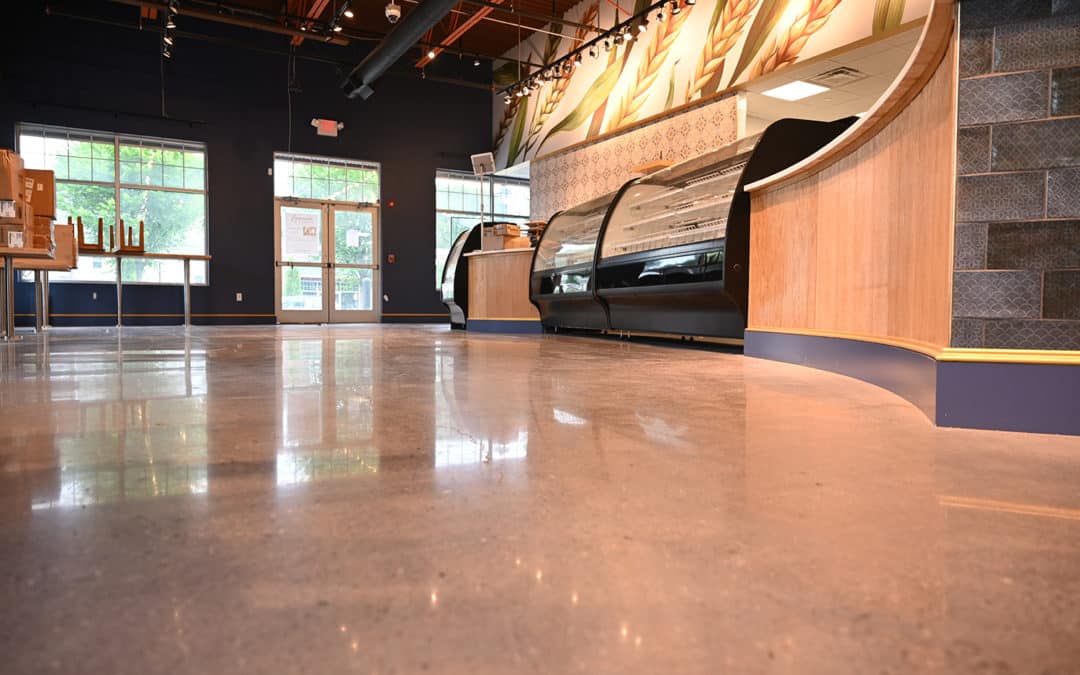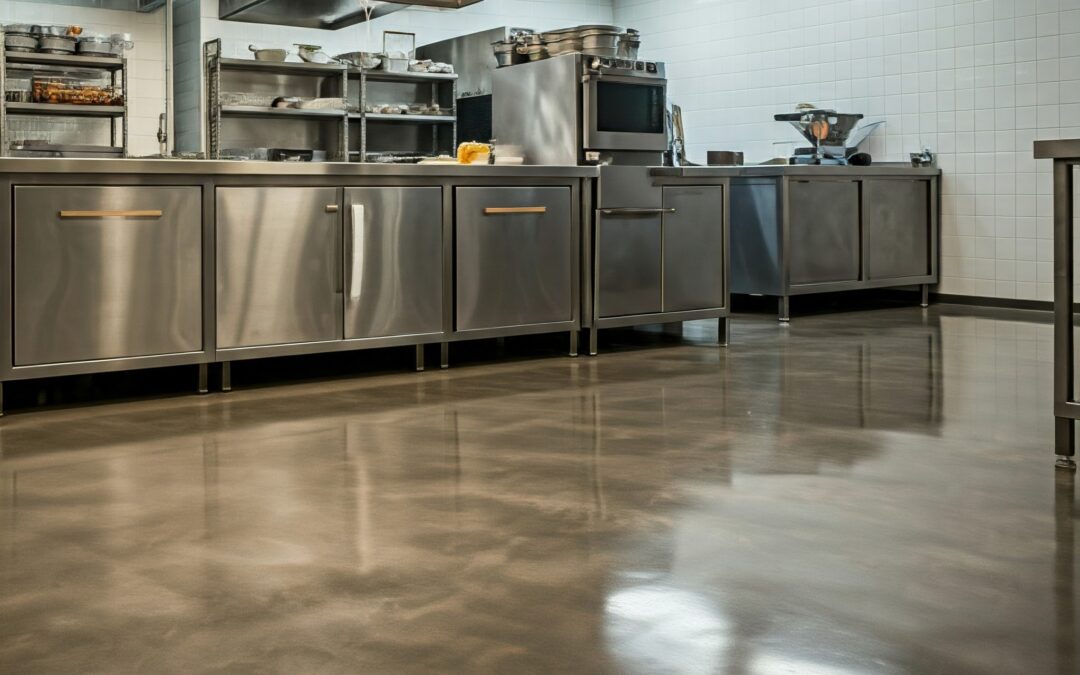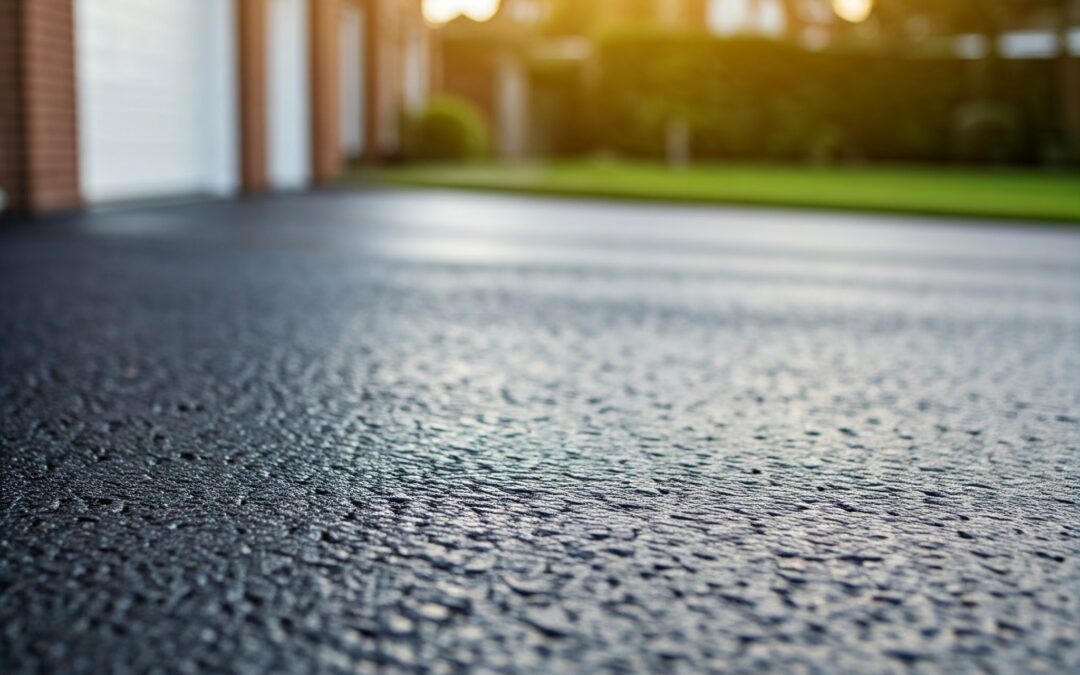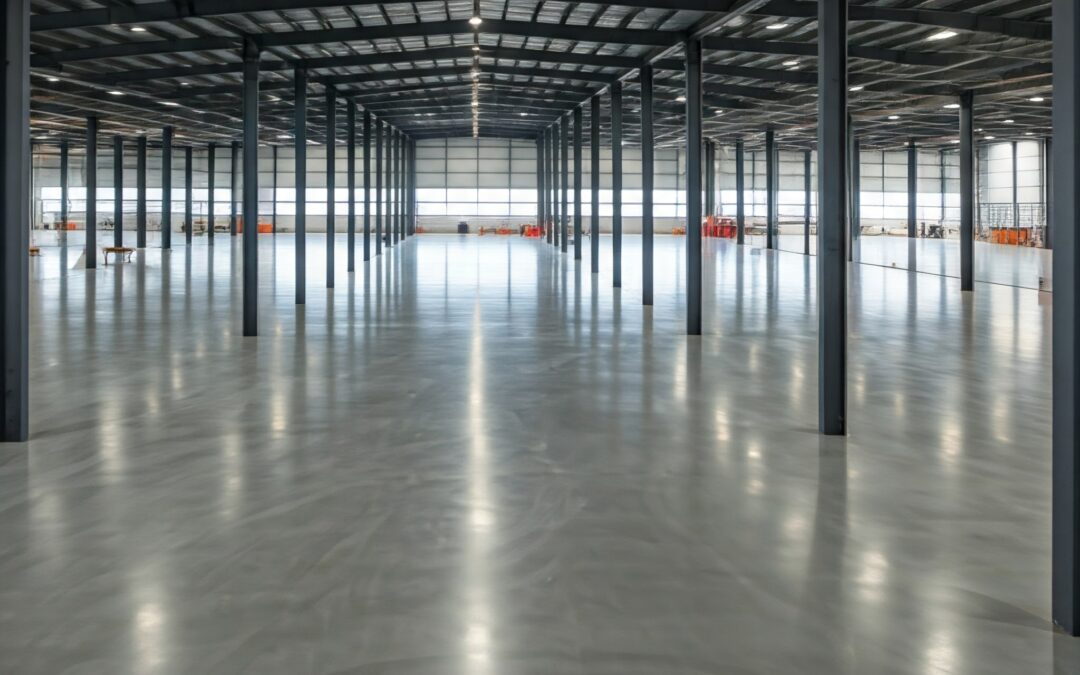Restaurant Floors: Durable Epoxy Solutions

Introduction to Epoxy Flooring for Restaurants
The Importance of Durable Flooring in Restaurants
In the bustling environment of a restaurant, flooring endures a significant amount of stress. From heavy foot traffic and the constant movement of furniture to the inevitable spills and dropped items, restaurant floors must withstand daily wear and tear. A durable flooring solution not only enhances the safety and functionality of the space but also contributes to the overall ambiance and cleanliness, which is essential for a positive dining experience.
Why Epoxy Flooring Stands Out
Epoxy flooring is an exceptional choice for restaurants due to its unmatched durability and aesthetic flexibility. It creates a seamless, high-gloss finish that is both attractive and practical. Unlike traditional flooring options, epoxy can handle the rigors of a restaurant environment with ease, offering a blend of strength, style, and easy maintenance.
Key Benefits of Epoxy Flooring
Superior Durability
Epoxy flooring is renowned for its robustness. Once applied and cured, it forms a hard, impact-resistant surface that can endure heavy foot traffic, dropped utensils, and the movement of heavy equipment without showing signs of wear. This durability ensures that the floor remains pristine and functional for many years.
Aesthetic Versatility
One of the standout features of epoxy flooring is its versatility in design. Available in a myriad of colors and finishes, including solid colors, metallic sheens, and decorative flakes, epoxy allows restaurant owners to customize their floors to match their brand and interior decor. This flexibility makes it suitable for any style of restaurant, from chic and modern to rustic and traditional.
Ease of Maintenance
Maintaining an epoxy floor is remarkably straightforward. Its seamless surface prevents dirt, grime, and bacteria from getting trapped, making it easy to clean and sanitize. Regular sweeping and occasional mopping with a mild detergent are typically all that is needed to keep the floor looking immaculate.
Chemical and Stain Resistance
Epoxy flooring is highly resistant to chemicals, oils, and other substances commonly found in restaurants. This resistance ensures that spills do not penetrate the surface, preventing stains and making cleanup quick and easy. This feature is particularly beneficial in kitchens and areas where food and drinks are prepared and served.
Types of Epoxy Flooring
Solid Color Epoxy
Solid color epoxy provides a sleek, uniform appearance that can enhance the aesthetic of any restaurant. This type of flooring is ideal for those seeking a clean, modern look with minimal distractions. The solid color can also be tailored to match the restaurant’s color scheme and branding.
Metallic Epoxy
Metallic epoxy flooring creates a stunning, three-dimensional effect that mimics the appearance of molten metal or polished marble. This type of epoxy is perfect for restaurants looking to make a bold design statement and create a memorable dining environment. The shimmering finish can add a touch of luxury and sophistication to the space.
Epoxy Flake Systems
Epoxy flake systems incorporate colored flakes into the epoxy mixture, resulting in a textured, multi-colored surface. This not only adds visual interest but also provides additional traction, making it a safe and attractive choice for busy restaurants. The flakes can be customized to create various patterns and color combinations, adding a unique touch to the floor.
Quartz-Filled Epoxy
Quartz-filled epoxy combines epoxy resin with colored quartz grains, creating a highly durable and slip-resistant surface. This type of flooring is especially suitable for areas that require extra safety, such as kitchens and entryways. The textured surface enhances grip while the decorative quartz adds a touch of elegance.
Installation Process
Surface Preparation
The first step in installing epoxy flooring is thorough surface preparation. This involves cleaning the existing floor, repairing any cracks or imperfections, and ensuring the surface is dry and free of debris. Proper preparation is crucial for ensuring the epoxy adheres correctly and lasts for many years.
Priming the Floor
Priming the floor helps to seal the surface and create a strong bond for the epoxy. A primer is applied to the prepared floor and allowed to dry, providing a stable base for the subsequent layers of epoxy. This step is essential for achieving a durable and long-lasting finish.
Applying the Epoxy Base Coat
The base coat of epoxy is then applied to the primed surface. This layer sets the foundation for the decorative elements and top coat. It is important to apply the base coat evenly to ensure a smooth and uniform finish.
Adding Decorative Elements
Once the base coat is applied, decorative elements such as metallic pigments, colored flakes, or quartz grains can be added. These elements are incorporated into the wet epoxy to create the desired pattern or texture. This step allows for customization and adds visual interest to the floor.
Sealing with a Top Coat
The final step in the installation process is applying a clear top coat. This top coat seals in the decorative elements and provides an additional layer of protection against wear and tear. It enhances the durability and longevity of the epoxy flooring, ensuring it remains attractive and functional for years to come.
Customization Options
Color Selection
Epoxy flooring offers a vast palette of colors, allowing restaurant owners to choose hues that complement their interior design and brand identity. From bold, vibrant colors to subtle, neutral tones, the possibilities are nearly endless.
Pattern and Design Choices
Beyond color, epoxy flooring can be customized with intricate patterns and designs. Techniques such as stenciling, freehand artistry, and multi-layered applications can create unique, eye-catching floors that make a strong visual impact.
Incorporating Logos and Branding
For a truly personalized touch, logos and branding elements can be embedded into the epoxy flooring. This not only reinforces brand identity but also creates a cohesive look throughout the restaurant, enhancing the overall customer experience.
Safety Features of Epoxy Flooring
Slip-Resistant Additives
Safety is paramount in a restaurant setting. Epoxy flooring can be enhanced with slip-resistant additives, creating a textured surface that reduces the risk of slips and falls. This is particularly important in areas prone to moisture, such as kitchens and restrooms.
Reflective Properties for Better Lighting
Epoxy floors have reflective properties that can help to brighten a space. By reflecting light, these floors can improve visibility and create a more inviting atmosphere, contributing to both safety and aesthetics.
Fire Resistance
Epoxy flooring is resistant to fire, providing an additional layer of safety for restaurant environments. This resistance can help to prevent the spread of fire, ensuring the safety of both staff and patrons.
Comparing Epoxy to Other Flooring Options
Epoxy vs. Tile
While tile flooring offers a classic look, it can be prone to cracks and grout lines that trap dirt. Epoxy flooring, in contrast, provides a seamless and more durable surface that is easier to maintain and less susceptible to damage.
Epoxy vs. Vinyl
Vinyl flooring is a cost-effective option but may not offer the same level of durability and aesthetic versatility as epoxy. Epoxy’s ability to withstand heavy traffic and its customizable design options make it a superior choice for high-traffic restaurant areas.
Epoxy vs. Polished Concrete
Polished concrete is durable and has a sleek appearance, but it lacks the design flexibility of epoxy. Epoxy flooring can mimic the look of polished concrete while offering additional benefits such as enhanced durability and resistance to stains and chemicals.
Cost Considerations
Factors Affecting the Cost
The cost of epoxy flooring can vary based on factors such as the size of the area, the type of epoxy used, and the complexity of the design. While the initial investment may be higher than some other flooring options, the long-term benefits often outweigh the costs.
Long-Term Savings
Epoxy flooring can lead to significant long-term savings. Its durability reduces the need for frequent repairs or replacements, and its ease of maintenance lowers cleaning costs. Over time, these savings can make epoxy a cost-effective flooring solution.
Maintenance and Care Tips
Regular Cleaning Routines
Maintaining an epoxy floor involves regular cleaning routines such as sweeping to remove debris and mopping with a mild detergent. This keeps the floor looking clean and extends its lifespan.
Dealing with Spills and Stains
Spills should be cleaned up promptly to prevent potential staining. Epoxy’s resistance to most chemicals and substances makes this process straightforward, ensuring the floor remains pristine.
Avoiding Common Damages
To prevent damage, avoid dragging heavy furniture or sharp objects across the floor. Using protective pads under furniture legs and being mindful of potential hazards can help maintain the floor’s integrity.
Case Studies of Restaurants Using Epoxy Flooring
Fast-Food Chains
Fast-food chains benefit greatly from epoxy flooring’s durability and ease of maintenance. These establishments experience high foot traffic and frequent spills, making epoxy an ideal choice for maintaining a clean and inviting environment.
Fine Dining Establishments
Fine dining restaurants appreciate the aesthetic versatility of epoxy flooring. Custom designs and luxurious finishes can enhance the ambiance, contributing to a memorable dining experience while maintaining practicality.
Cafes and Bakeries
Cafes and bakeries, with their unique blend of foot traffic and occasional spills, also find epoxy flooring advantageous. Its resistance to stains and ease of cleaning are particularly beneficial in these settings.
Environmental Impact
Eco-Friendly Epoxy Options
Many manufacturers now offer eco-friendly epoxy options. These products are formulated with low VOCs (volatile organic compounds) and sustainable materials, reducing their environmental impact.
Sustainability of Epoxy Materials
The long lifespan and durability of epoxy flooring contribute to its sustainability. By reducing the need for frequent replacements, epoxy flooring helps to minimize waste and resource consumption.
Environmental Impact of Epoxy Flooring
Dispelling Misconceptions
Misconceptions about epoxy flooring include beliefs that it is too slippery or difficult to install. However, with the addition of slip-resistant additives and professional installation, these concerns are easily addressed.
Proven Performance in Real-World Settings
Real-world applications of epoxy flooring demonstrate its reliability and effectiveness. From busy commercial kitchens to elegant dining rooms, epoxy has proven to be a versatile and durable flooring solution.
Troubleshooting and Repairs
Addressing Common Issues
Common issues such as bubbles, uneven surfaces, or minor chips can occur with epoxy flooring. These problems are often due to improper installation or lack of maintenance. Addressing them promptly ensures the floor remains in top condition.
When to Seek Professional Help
For persistent or severe issues, it may be necessary to seek professional help. Experts can diagnose and repair problems efficiently, ensuring the longevity and appearance of the epoxy flooring.
Future Trends in Epoxy Flooring
Technological Advancements
Technological advancements in epoxy flooring include new formulations that enhance durability and ease of application. Innovations such as self-leveling epoxies and hybrid systems are expanding the possibilities for this versatile flooring solution.
Emerging Design Trends
Emerging design trends in epoxy flooring include bold colors, intricate patterns, and metallic finishes. These trends reflect the growing popularity of epoxy as a stylish and functional flooring option.
Epoxy flooring offers numerous benefits, including superior durability, aesthetic versatility, ease of maintenance, and chemical resistance. It is a practical and attractive solution for restaurant environments.
Transform your restaurant’s flooring with durable and stylish epoxy solutions. Whether you opt for a simple design or a custom creation, epoxy flooring will enhance the functionality and beauty of your space. Consider the long-term benefits and start your project today to enjoy a pristine and resilient floor for years to come.

Transform Your Space with Commercial Concrete Polishing: Services and Benefits
Concrete polishing is a transformative solution for commercial, industrial, and warehouse spaces, offering durability, aesthetic appeal, and low maintenance. Whether you're revitalizing an old floor or finishing a new one, polished concrete provides a sleek and...

Seal Coating Driveways: Costs, Benefits, and Expert Solutions
Seal coating driveways is an essential maintenance step that protects surfaces, enhances durability, and boosts curb appeal. Whether you have asphalt or concrete, a well-applied seal coat creates a protective barrier against weather, UV rays, and wear, extending the...

Driveway Coating Solutions: Costs, Ideas, and Best Options
Driveway coatings are essential for enhancing durability, improving aesthetics, and protecting your surface from harsh weather and wear. With various options available, choosing the right coating for your needs depends on factors such as cost, durability, and desired...

Seal Coating Driveways: Costs, Benefits, and Expert Tips
Seal coating is an essential maintenance step for asphalt driveways, offering a cost-effective way to protect and enhance their longevity. By applying a protective layer, seal coating shields driveways from wear and tear caused by weather, traffic, and UV rays. If...

Industrial Epoxy Flooring Solutions: Durable, Safe, and Long-Lasting
Industrial epoxy flooring is a cornerstone of durable and safe workspaces, offering unmatched performance in high-demand environments. From warehouses to manufacturing plants, these floors provide resistance to wear, chemicals, and impact while maintaining a sleek and...
